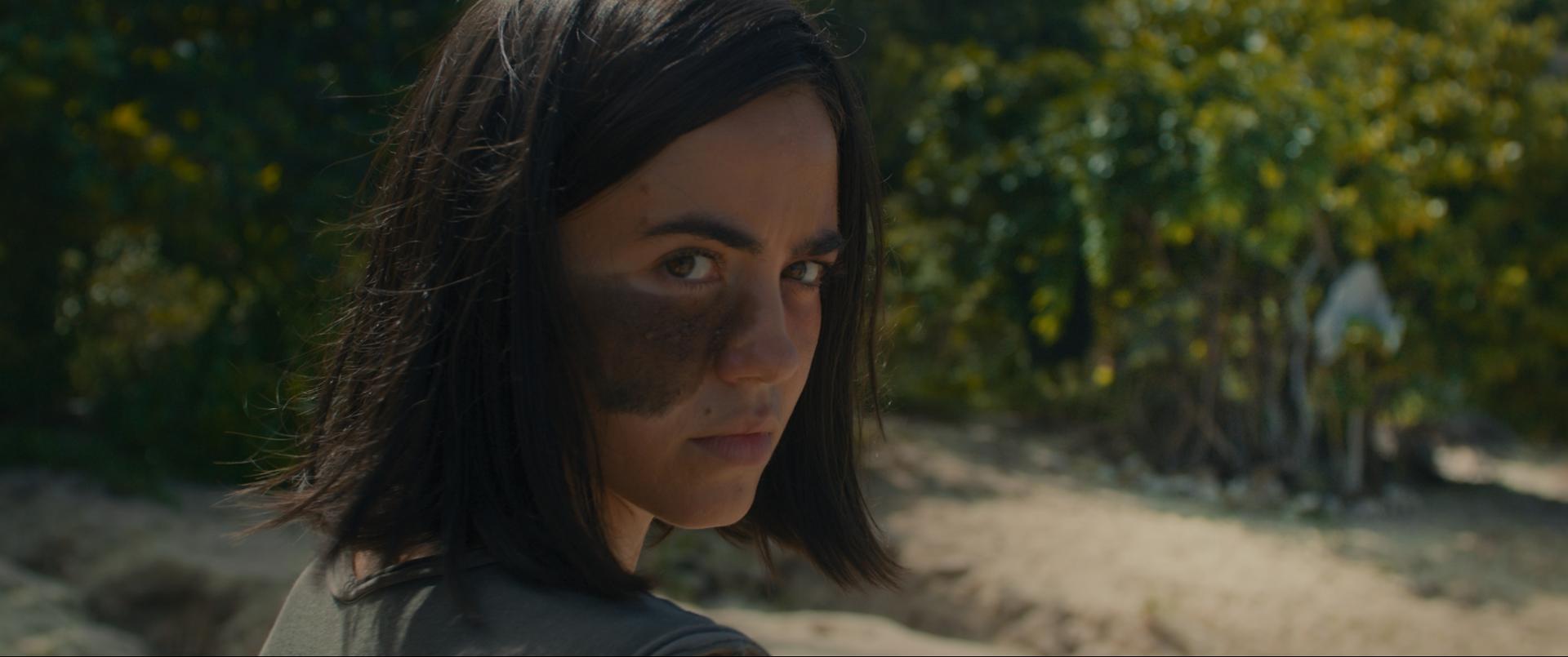It might sound peculiar, but I feel like I may actually like the Teenage Mutant Ninja Turtles even more as an adult than I did as a kid. Back then, I certainly liked the Ninja Turtles, in fact, I liked them a fair amount. I missed the cutoff age for the original animated series and Turtles in Time (but I did experience and enjoy the SNES classic later on in life), but I thoroughly enjoyed the 2003 cartoon (which is personally my favorite representation of the Turtles aesthetically) and I watched the original 1990 film more times than I can count.
I believe my appreciation for the series has deepened the more I started to realize the audacity of its existence and the sheer fun of its absurdity. All of us know the story by now.
Four turtles were altered by a radioactive chemical that spilled into the sewer, they were then adopted by a rat who trained them in the ways of ninjutsu.
That in itself is a concept so beautifully goofy that you can’t help but smile at it.
As I have gotten older, I can appreciate even more how absurd their backstory is. The Ooze was (kind of) officially (but unofficially) the same chemical that blinded Marvel’s superhero Daredevil. Not only that, but the series is filled to the brim with references and parodies of Daredevil. The main bad-guys are the Foot Clan (instead of the Hand) and they were trained by a rat named Splinter (instead of Stick). If you take a step back, it can really be seen how ludicrously bonkers everything about the series is. Similar to Deadpool, Teenage Mutant Ninja Turtles really feels like a series that was never meant to break into mainstream culture the way it has. That, in and of itself, makes the joke only that much more enjoyable.
They skateboard in the sewer. They love pizza. They’re named after famous painters. It’s a wacky time and I am all for it. Cowabunga!
Adaptations beyond the animated series’ and Turtles in Time have left a lot to be desired, however.
I loved the original 1990s film as a kid, but when I went back and re-watched it, I couldn’t help but believe it left a lot to be desired. I still enjoyed it. I still largely prefer the cheesy-looking rubber suits over the ugly CGI-laden representations shown in the more recent duology. However, I will admit that the characters and how they are developed, and how certain things were portrayed, weren’t as realized as they could have been. What I think it comes down to, for me, is that they simply didn’t capture the sense of personality for the Turtles and the world they were in as well as best case scenario. The best case scenario being the animated series’, which I may talk about one of these days on Nickelbib.
After the 1990s film, I can more or less take or leave everything afterward. I didn’t care for Secret of the Ooze or Ninja Turtles III, and although I firmly believe the characters are best suited in the animated medium, the 2007 film was a swing and a miss. The Michael Bay produced Teenage Mutant Ninja Turtles was a beautiful disaster. It was a disaster in the sense that I thought it was a terrible film, but it was beautiful in the sense that it managed to make nearly half a billion dollars at the worldwide box office. Meanwhile, while its sequel Out of the Shadows, while a considerable improvement over its predecessor, was too little too late in my opinion. As strange as it may sound, in spite the hundreds of millions of dollars being thrown at it, the best film to be made about the Ninja Turtles since the 90s original is actually the Batman vs. Teenage Mutant Ninja Turtles film that was released a few years ago.
What I am trying to say in a meandering, dithering kind of way is that the Teenage Mutant Ninja Turtles as a whole, across all mediums has a lot of untapped potential. It is one of the things that makes me love the series as much as I do. Before watching the latest film Mutant Mayhem, I was excited about two projects on the horizon for Ninja Turtles. This film and an adaptation of The Last Ronan graphic novel. Both could land either way, and I have no misconceptions about THQ Nordic and its shoddy track record, but what also excites me is out completely, utterly different both are. The Last Ronan is a story of dark subject matter, looking like a white-knuckle, gritty story for the Turtles, akin to Samurai Jack or a classic revenge-story. The comparisons to God of War: Ragnarok are a little too ambitious for a company like Nordic, but I still think it could a lot of fun. Likewise, it could lead to further developments for the characters. Sometimes, unexpected properties can be the source of new, groundbreaking developments in established intellectual properties. In 2010, Spider-Man: Shattered Dimensions was released and helped to lay the groundwork for Spider-Man: Into the Spider-verse, which helped lay the groundwork for Spider-Man: No Way Home, with the most recent Across the Spider-Verse seeing some of the most ambitious developments to the Spider-Man canon in ages.
To me, it is always exciting when old series’ can find facelifts or fresh developments, so I am exciting and hopeful The Last Ronan videogame will be able to usher new developments into popular canon, the new Turtles, for instance, would be very cool.
With Mutant Mayhem, we find ourselves on the complete opposite side of the spectrum. This isn’t uncharted territory for the Teenage Mutant Ninja Turtles in the least, instead, it is a new reimagining of the characters. Although some of us may have to shake off the initial cynicism of having to turn the clock on yet another interpretation of TMNT, I was very excited about it.
I believe that Spider-Man: Across the Spider-verse may have changed the game for animated superhero in a dramatic fashion, as you can clearly see the heavy inspiration and influence with Mutant Mayhem. The blend of different styles and that sense of kinetic, frantic animation Across the Spider-Verse had bleeds into Mutant Mayhem and sticks the landing with flying colors.
I know I heard some mixed responses about the Turtles re-design, with some purists criticizing new developments to the characters and some simply not liking the approach. For me though, I had a fairly unanimous affection for the new approach and I would call it the best visual depiction I have seen on film, but not overtaking my affection for the 2003 series. I am all for the different ways the artists went about making each Turtles have his own personality and identity to them. The only thing I am a little mixed on is certain ones having braces, but I might retroactively warm up to it if the film receives sequels showing the characters age and grow out of them.
As a film, I was excited at the prospect of being able to bring things back to the basics for the Ninja Turtles. As a personal observation, after watching Mutant Mayhem shortly after seeing Across the Spider-Verse, I feel they provide a compelling argument that superhero films were always better suited for animation. The medium simply allows the characters and their personality to pop off the screen in a way live-action is usually incapable. For a long time, it always felt like there was this stigma about animation, this perception that something isn’t real or mature enough when it is an animated film. It is a stigma we should have bucked off a long time ago. These films work great as animated films and I find it so weird that we have allowed ourselves to ever believe it is some kind of handicap or detractor when the opposite is true.
Mutant Mayhem has style to spare. The soundtrack is composed by Trent Reznor and Atticus Ross and the art style is fun and filled with personality. It feels like a labor of love, at a time when, for as long as I can remember, Ninja Turtles movies have let like they are made on a conveyor belt.
The approach to make the characters actual teenagers was an inspired decision. It certainly creates a unique effect for the film overall. At the same time, I do believe the film has a rapid-fire, million-words-a-minute feeling to it, with character development sometimes left by the way side in favor of overstuffing the film with as many name-drops and cultural references as its runtime can contain.
I’m not criticizing it. Not really. I can appreciate it. I can appreciate the fact that, for the first time, the Turtles act and talk like actual teenagers (and, by teenager, I mean thirteen), but, perhaps, I wasn’t ready for what that entailed. The film doesn’t go for a grandiose or big-time villain for the Turtles first go-around, which is both a common sense decision, given the prospect of many sequels, and a logical decision.
For me, this is a simple, straightforward film, largely benefited by the technique and behind-the-scene talent hard at work. As a story, as a portrayal of its characters, and as a film overall, however, I can’t help but believe it is only a good film. Which isn’t anything to be ashamed of. This is, in my opinion, the best portrayal of the Turtles ever brought to film, simply because of how it accomplishes having the charm and lovability of a good, fun superhero film. However, I did leave the film thinking to myself that the best, in theory, is what comes afterward.
As much as I am interested in the journey to the Turtles becoming the characters they eventually become, of establishing its rogues’ gallery, and the fun that will ensue, the biggest steps toward that are what will come after this film. We can only hope that Mutant Mayhem has a healthy run at the box office and is allowed to lay the foundation for the series to come.
I would recommend it.





